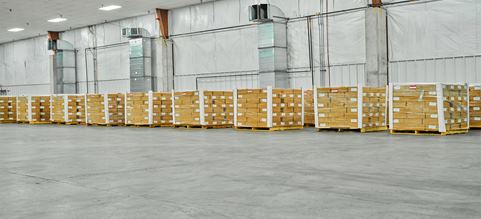Carbon Border Adjustment Mechanism has come into effect
The EU Carbon Border Adjustment Mechanism (CBAM) has been in effect for imported goods from outside the EU since October 1st. What does this regulation entail, and what are the consequences if you are an importer of such goods?

On October 1, 2023, the Carbon Border Adjustment Mechanism (CBAM) officially came into effect. CBAM is one of the initiatives under the European Union's 'Fit for 55' program and involves an import tax applied to certain goods imported into the EU. The new regulation is aimed at ensuring that these imported goods also comply with EU climate goals by assessing CO2 emissions. Importers of specific goods are required to purchase CBAM certificates to offset emissions generated during the production of these goods. This results in increased costs for importing these goods.
The obligation to purchase CBAM certificates will only come into effect from January 1, 2026. However, since October 1, importers of these goods have been responsible for accurate reporting during the import of goods subject to CBAM.
On which goods is CBAM applicable?
The CBAM is applicable to goods such as iron, steel, cement, fertilizers, aluminum, electricity, and hydrogen. It also applies to certain intermediates or end products of these goods, including liquefied natural gas, gasoline, fuel oil, synthetic rubber, plastics, lubricants, antifreeze, fertilizers, and pesticides.
The specific Harmonized System (HS) codes that fall under the CBAM implementation regulation have been officially announced:
- HS Chapter 25 – Cement: certain items of Headings 2507 and 2523;
- HS Chapter 27 – Electricity: electrical energy of HS 2716;
- HS Chapter 28 – Fertilizers and Hydrogen: certain items of Headings 2804, 2808, 2814, 2834, 3102, and 3105;
- HS Chapter 72 – Iron and Steel: except certain products of Heading 7202;
- HS Chapter 73 – Articles of Iron and Steel: certain items of Headings 7301, 7302, 7303, 7304, 7305, 7306, 7307, 7308, 7309, 7310, 7311, 7318, and 7326;
- HS Chapter 76 – Aluminum: certain items of Headings 7601, 7603, 7604, 7605, 7606, 7607, 7608, 7609, 7610, 7611, 7612, 7613, 7614, and 7616.
CBAM reporting
Although most provisions of the regulation will only come into effect from January 1, 2026, the initial obligations will apply during the transition period from October 1, 2023. Importers and indirect customs representatives are required to submit a CBAM report to the EU Commission on a quarterly basis for the relevant HS codes.
The initial phase of CBAM has officially begun with a reporting period covering the last quarter of 2023. Importers have until the last day of January 2024 to submit accurate reports. While the EU has not yet fully disclosed all the requirements, it is known that CBAM reporting must include at least the following information:
- The quantity of imported goods per customs procedure;
- Combined Nomenclature (CN) code of the goods;
- Country of origin;
- Details on where the goods were manufactured;
- Production methods and applied quality standards;
- For steel products: the ID of the relevant steel mill;
- Direct and indirect emissions related to imported goods (at both the product and facility level);
- The CO2 levy in the country of origin, with reference to the law governing this levy and the number of emissions covered by any free allocations, discounts, or other forms of compensation.
Who is responsible for accurate CBAM reporting?
According to the CBAM implementation regulation, the importer of the goods is initially responsible for compliance and the submission of CBAM reporting. DSV is ready to support importing parties by providing any essential (customs) information that may be required to correctly complete this CBAM reporting. Importing parties should, however, be aware that much of the necessary information is exclusively in the possession of these companies themselves and is not accessible to third parties.
Who is responsible for reporting in the case of indirect representation by a freight forwarder? (header)
When a freight forwarder acts as an indirect representative for the importing party in customs matters, the situation becomes more complex. According to the CBAM implementation regulation, two different scenarios can arise:
- If the importer is based in the EU, they can be responsible for CBAM reporting themselves, or they can delegate this responsibility to the indirect representative. This requires mutual agreements on who takes on which role to comply with these new regulations.
- For importers located outside the EU (with no establishment within the EU), the default rule is that the indirect representative is responsible for CBAM reporting. This also requires mutual agreements, particularly regarding practical matters and how missing data will be supplemented.
What can you do?
We recommend that you check which of your products may potentially fall under CBAM regulations. Then, use the customs declarations of the imported products exclusively for your CBAM reporting. For detailed calculation methods and required information, you can refer to the European Union's website.
DSV understands that CBAM reporting can be complex, as much of the required information may not be readily available to freight forwarders. We are ready to find solutions and assist your company with relevant CBAM reporting. Please reach out to your regular contacts within DSV for more information.
Any questions?
Contact Erwin Peeters, our press contact.

